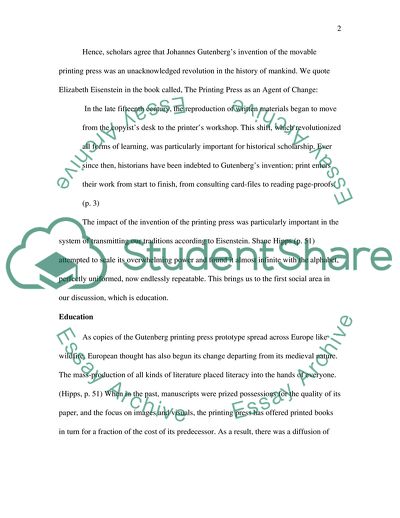Cite this document
(The Introduction of the Printing Press Essay Example | Topics and Well Written Essays - 1250 words, n.d.)
The Introduction of the Printing Press Essay Example | Topics and Well Written Essays - 1250 words. https://studentshare.org/technology/1705402-the-introduction-of-the-printing-press-had-a-significan-impact-on-education-organized-religion-and-written-languages-discuss-each-social-area-affected-by-th
The Introduction of the Printing Press Essay Example | Topics and Well Written Essays - 1250 words. https://studentshare.org/technology/1705402-the-introduction-of-the-printing-press-had-a-significan-impact-on-education-organized-religion-and-written-languages-discuss-each-social-area-affected-by-th
(The Introduction of the Printing Press Essay Example | Topics and Well Written Essays - 1250 Words)
The Introduction of the Printing Press Essay Example | Topics and Well Written Essays - 1250 Words. https://studentshare.org/technology/1705402-the-introduction-of-the-printing-press-had-a-significan-impact-on-education-organized-religion-and-written-languages-discuss-each-social-area-affected-by-th.
The Introduction of the Printing Press Essay Example | Topics and Well Written Essays - 1250 Words. https://studentshare.org/technology/1705402-the-introduction-of-the-printing-press-had-a-significan-impact-on-education-organized-religion-and-written-languages-discuss-each-social-area-affected-by-th.
“The Introduction of the Printing Press Essay Example | Topics and Well Written Essays - 1250 Words”. https://studentshare.org/technology/1705402-the-introduction-of-the-printing-press-had-a-significan-impact-on-education-organized-religion-and-written-languages-discuss-each-social-area-affected-by-th.


